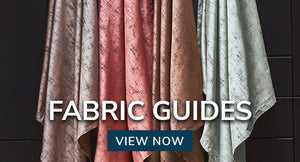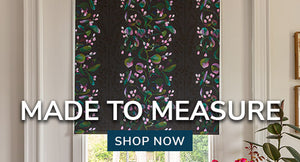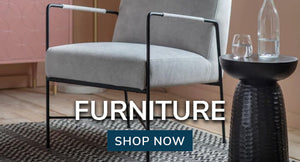Alexander Mueller is an award-winning Austrian-born furniture designer and maker, based in London. He is a hands-on designer who approaches his creation process through making and experimenting with materials. He strives to deliver exceptional pieces of furniture, defined by clean lines. He focuses on combining new technologies with traditional craftsmanship, in order to highlight the natural beauty of materials and draw attention to small details.
Image Credit: 1) Heals 2) The Coran Shop 3) Aram 4) Tom Dixon 5) Skandium
- Transcript -
1) In your own words describe your unique style and creative aesthetic?
My style can be described as contemporary elegance referencing tradition. One of my main creative aesthetics are clean lines, which I find comforting. I am an organised person and need my surroundings to reflect that, and clean lines give every room a certain order, calmness and clarity. Clean lines are always referenced in one way or another in my designs (sometimes in their conscious absence).
2) When starting a new project, what is your creative process?
Once I have a rough idea for what I want, I sketch it and quickly move to the workshop to prototype it. It’s only through the tactile experience that I get a feel for proportions and ensure that all designs are functional. This is something I consistently try to achieve, as it develops your understanding of the material you are working with. Once I’m happy with the prototypes, I re-sketch them for the manufacturer, and then we discuss the best ways to make the pieces, select appropriate materials for the designs and try to reduce any wastage.
3) Out of the creative people you have worked with, who is it that you respect and admire the most?
I respect all the people I have worked with, and all of them show so many different qualities. One of them is Philip Michael Wolfson. His unique approach to design and art is informed by the dynamics of fracture and fragmentation – layering and manipulating his materials into fluid shapes and forms, where the dynamics of light, shadow and reflection are an integral part of his work.
4) When looking for inspiration is there a particular thing you do to get inspired?
I am strongly influenced by architecture and my surroundings. London’s galleries, buildings and museums offer great inspiration and research possibilities. I tend to look for small interesting details, juxtapositions and angular lines. I do love an angle.
5) What has brought you to this point in your career? And what is your advice for people looking to follow in your footsteps?
I think it’s important to know what you want to do and find ways to achieve that. If you’re passionate about your chosen field, this will then translate into your work, and people will appreciate you for that. Also, if you are unsure, it’s important to try out new things and not be afraid of failing – you have to put yourself out there.



















































